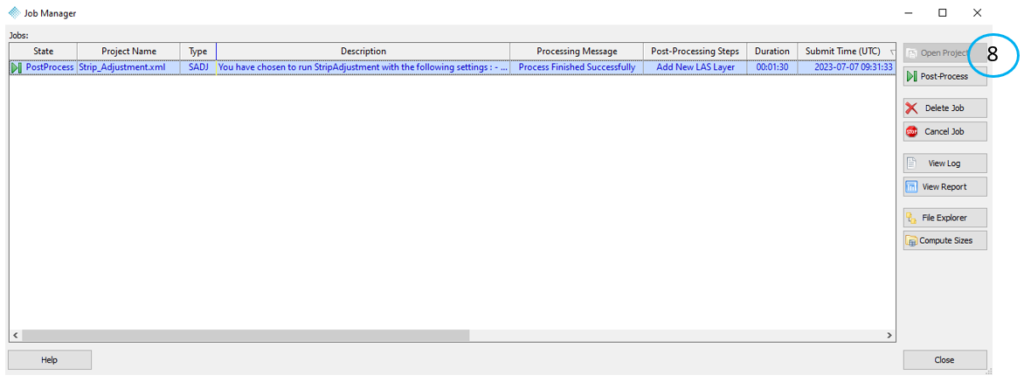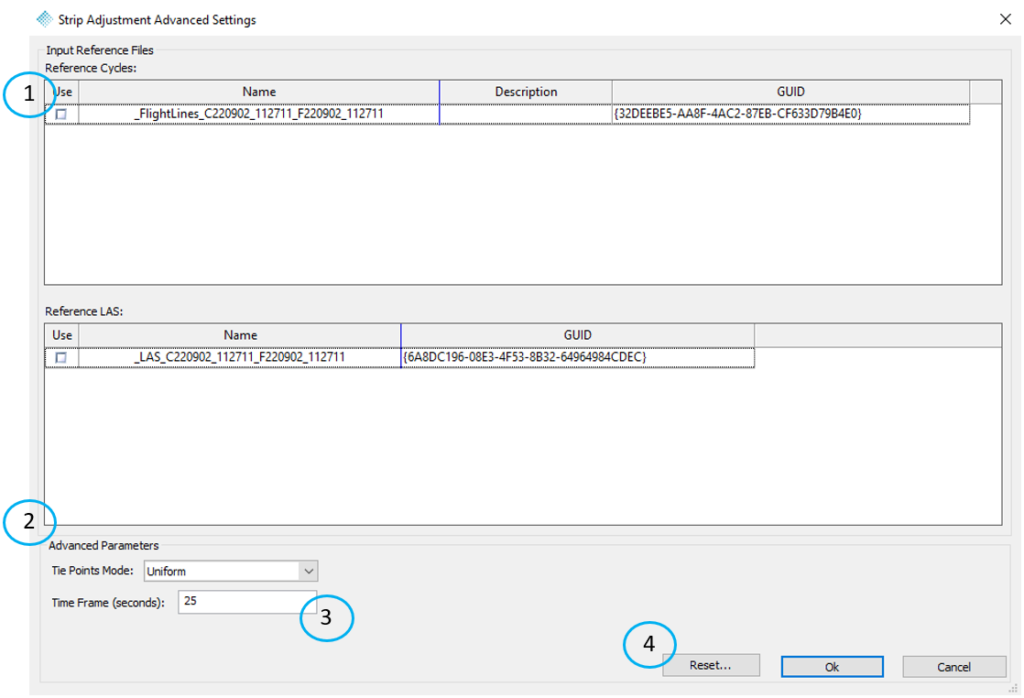In this article it is explained step by step how to use the Strip Adjustment tool.
1. Introduction
Strip Adjustment is a module available in LP360 Drone starting from v2023.2 and is only available within the TrueView workflow. This means that only TrueView and microdrones data processed in LP360 Drone can benefit from Strip Adjustment. The module can be found on the TrueView Workflow toolbar.
Refer to the method and context behind Strip Adjustment.
2. How to use Strip Adjustment
Before using the Strip Adjustment, make sure you have a good initial orientation of strips, this means a good calibration of the survey system should been done. Then, proper boresight angles, lever arms, and potential latency should be known. It is advised to use the Strip Adjustment only when needed to improve the point cloud precision.
Strip Adjustment requires a “Strip Adjustment” or a “Strip Align” addon license be checked out in addition to the LP360 Drone license.
2.1. Pre-requisite steps
Strip Adjustment must be used within the TrueView workflow. The tool can only be used after performing the following steps:
- Import the cycle into LP360 Drone.
- Process the sensor trajectory using the Trajectory Processing wizard.
- Flight lines generation. *Not applicable for most but not all microdrones sensors.
- Create TrueView trajectories.
- Perform LiDAR Geocoding.
2.2. How to use Strip Adjustment
After Geocoding, we can perform the following Strip Adjustment steps:
- Open the Strip Adjustment module.
- Select the flights to be adjusted.
- Select the desired Geocode options. *Tip: use the same settings as Geocode LiDAR.
- Select the desired Processing settings.
- Add a name for the new layer that will result from the processing.
- Select “Submit StripAdjustment job” to send the job to the Job Manager.
- Open the “Job Manager”.
- Wait until the status changes to “PostProcess”.
- Press “Post-Process” to add the Strip Adjusted point cloud to your project.
3. Advance settings
Strip Adjustment default settings are well rounded and work well most of the time. However, the tool also allows advance users to optimize the settings for each flight.
- Input Reference File
- Advanced Parameters, Tie Points Mode
- Advanced Parameters, Time Frame
- Reset
3.1. Input Reference File
In the Input Reference File section, the user has the option to use some references for the adjustment. The reference is data that will not be adjusted but will be used during the adjustment to fit the rest of the flight lines to it. One of the conditions to use reference files, is that the files need to overlap with the adjusted area. See Processing Multiple flights for more details.
The reference files can be any combination of:
- Reference Cycle: one or more cycles can be used as reference.
- Reference LAS: one or more LAS files can be used as a reference.
Note that the cycle(s) selected in the input settings will not appear in the list.
3.2. Advanced Parameters
This is dedicated to advanced users, so non-advanced users should not modify this section. Changing these settings will change how Strip Adjustment results are generated and may also affect the processing time.
3.2.1. Tie Points Mode
To estimate the trajectory correction, only a portion of data is considered. The considered portion is constituted of points, which we refer to as Tie points. Tie points should be representative enough of the sensor trajectory errors. This is realized by subsampling the data. There are two implemented subsampling methods. This parameter enables to define the one used:
Uniform: Recommended mode. Tie points are uniformly distributed through the terrain. This option should be used for non-flat terrains. It is also recommended for high dynamic trajectory errors.
Normal: Tie points are equally distributed on each inch of the terrain with a different orientation. This option should be used for terrains with a predominant direction where the variation of the orientation is relatively small. It is also recommended for low dynamic trajectory errors.
3.2.2. Time Frame
Defines the frequency of the estimated temporal correction of the trajectory. The smaller the value, the higher the frequency of the correction. The higher the frequency of correction, the more time consuming is the processing.
| Minimum value | High dynamic error | Low dynamic error | Maximum value |
|---|---|---|---|
| 5 secs | 15 secs | 25 secs (default) | N/A – depends on the flight line length |
3.3. Reset
The reset button will reset all the Strip Adjustment parameters to the default ones.
If you are looking for the method and context for Strip Adjustment, please review the article on Strip Adjustment – Method and Context
For some recommendations on using Strip Adjustment for Processing Multiple flights.
For boresite calibration, see Strip Calibration.






